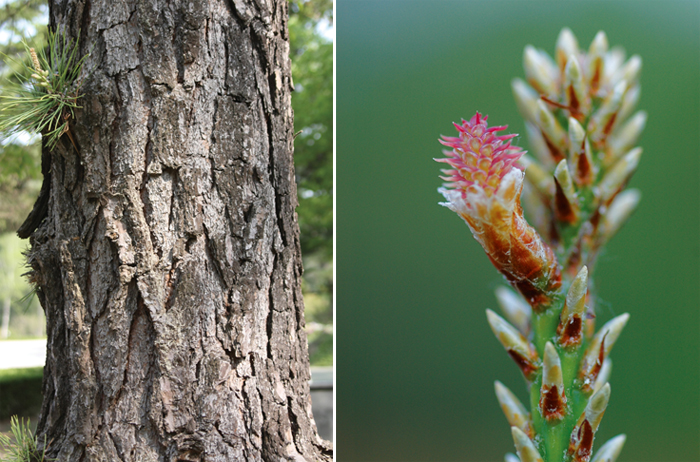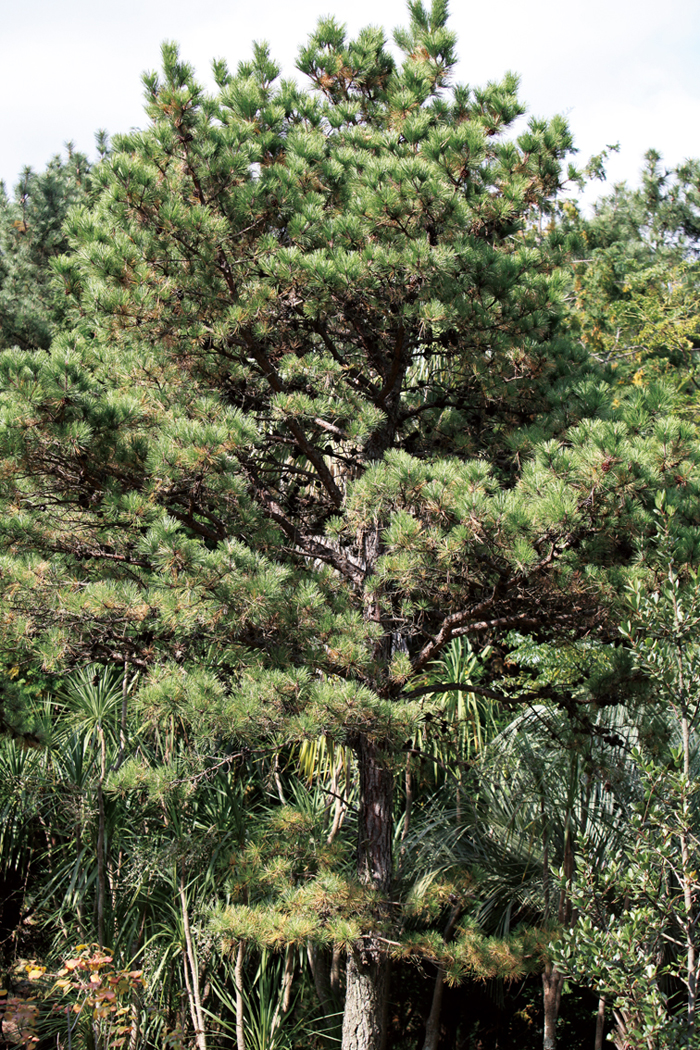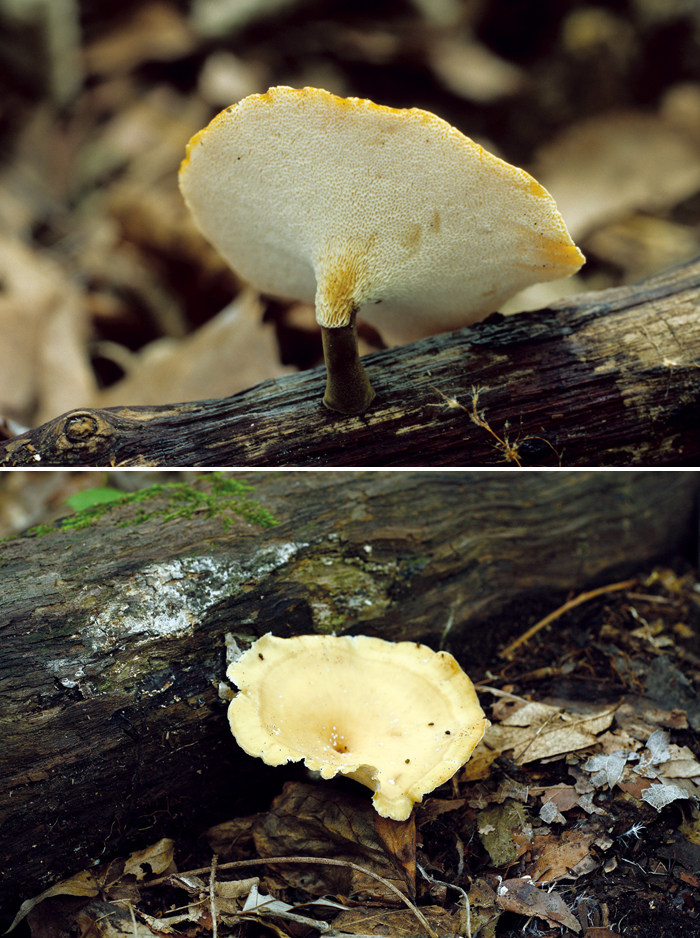View this article in another language
- 한국어
- English
- 日本語
- 中文
- العربية
- Español
- Français
- Deutsch
- Pусский
- Tiếng Việt
- Indonesian
Flora & Fauna of Korea #7
Korea.net publishes a series of articles, “Nature You Meet in the Mountains,” about the peninsula’s mushrooms, insects, trees and herbs & flowers.

Insects
Name: 고추잠자리 (Gochu jamjari)
Scientific name: Crocothemis servilia servilia (Drury)
Distribution: Korea, China, Japan, Taiwan, Indochina and India
This red dragonfly has an average body length of 28 to 32 millimeters and a wingspan of 33 to 36 millimeters. Both the male and female have similar body sizes. The head is as wide as seven millimeters and the body is quite smooth, with neither hairs nor bumps. A bold, little saw tooth mark stands out along the abdominal segments. The male and female have different body colors. Newly hatched flies have a yellow thorax but both sexes have an orange abdomen. In autumn, they change color. The male changes its thorax to brown and the abdomen goes red while the female changes into a light orange.
Ecology: These large dragonflies appear from June to July around the lowlands of rivers, swamps and rice paddies, and can be observed until November. After hatching, they tend to move to the higher mountains, flying in flocks during the summer. When the temperature begins to drop, they come back to lower altitudes looking for ponds, watersides and other good hatching grounds.



Trees
Name: 리기다소나무/삼엽송 (Rigida sonamu/samyeopsong)
Scientific name: Pinus rigida Mill.
Type: evergreen with needles, very tall
Blooming season: May
Bearing season: September
Distribution: nationwide
This pitch pine grows in the mountains with a height of 25 meters and a trunk approximately one meter in diameter. The bark is reddish brown. The needles are in clumps of three or sometimes four, and are rigid and often slightly twisted. This tree is momoecious. The flower stalk is not tough, very short and light brown. It bears an egg-shaped cone.
The tree can be used in reforestation and erosion control as the pitch pine can resist both dry and wet conditions. Also, the tree tends to be less likely to be harmed by pine caterpillars.

Mushrooms
Name: 검정대겨울우산버섯 (Geomjeongdaegyewul wusanbeoseot)
Scientific name: Royoporus badius (Pers.) A. B. De
Type: saprophile spore
Print: white
Inedible
This fungus, known as the black-footed polypore, grows on stumps and the fallen and dead branches of broad-leaved trees. It causes a white rot on both hardwoods and conifers. The pileus is an average diameter of 4 to 15 centimeters and is 1 to 5 centimeters thick. The shape varies from circular to reniform, and the surface color ranges from yellow brown to dark brown. The surface is wide and flat and a bit glossy. The fungus has a white leathery texture. It rolls into a ball when dried and is easily broken or folded. The underside is also white and is 1 to 2 millimeters thick. In the middle, there are five to seven miniscule circular holes that measure barely a millimeter altogether.

Herbs & Flowers
Name: 관중/ 호랑고비 (Gwanjung/ Horang gobi)
Scientific name: Dryopteris Crassirhizoma Nakai
Full bloom: propagation by spore
Distribution: shady spots, wetlands
This perennial grows in shady and damp areas in the deep mountains. It is an average height of 50 to 100 centimeters. The arching fronds grow from around its roots to an average of one meter high. It develops bipinnate scale leaves with a dull saw tooth along the edges. The sorus forms in the middle of the leaves in a bilinear order.
*This series of article about Korea’s insects, trees, mushrooms and herbs & flowers has been made possible with the cooperation of the Korea National Arboretum.
Korea.net publishes a series of articles, “Nature You Meet in the Mountains,” about the peninsula’s mushrooms, insects, trees and herbs & flowers.

Insects
Name: 고추잠자리 (Gochu jamjari)
Scientific name: Crocothemis servilia servilia (Drury)
Distribution: Korea, China, Japan, Taiwan, Indochina and India
This red dragonfly has an average body length of 28 to 32 millimeters and a wingspan of 33 to 36 millimeters. Both the male and female have similar body sizes. The head is as wide as seven millimeters and the body is quite smooth, with neither hairs nor bumps. A bold, little saw tooth mark stands out along the abdominal segments. The male and female have different body colors. Newly hatched flies have a yellow thorax but both sexes have an orange abdomen. In autumn, they change color. The male changes its thorax to brown and the abdomen goes red while the female changes into a light orange.
Ecology: These large dragonflies appear from June to July around the lowlands of rivers, swamps and rice paddies, and can be observed until November. After hatching, they tend to move to the higher mountains, flying in flocks during the summer. When the temperature begins to drop, they come back to lower altitudes looking for ponds, watersides and other good hatching grounds.



Trees
Name: 리기다소나무/삼엽송 (Rigida sonamu/samyeopsong)
Scientific name: Pinus rigida Mill.
Type: evergreen with needles, very tall
Blooming season: May
Bearing season: September
Distribution: nationwide
This pitch pine grows in the mountains with a height of 25 meters and a trunk approximately one meter in diameter. The bark is reddish brown. The needles are in clumps of three or sometimes four, and are rigid and often slightly twisted. This tree is momoecious. The flower stalk is not tough, very short and light brown. It bears an egg-shaped cone.
The tree can be used in reforestation and erosion control as the pitch pine can resist both dry and wet conditions. Also, the tree tends to be less likely to be harmed by pine caterpillars.

Mushrooms
Name: 검정대겨울우산버섯 (Geomjeongdaegyewul wusanbeoseot)
Scientific name: Royoporus badius (Pers.) A. B. De
Type: saprophile spore
Print: white
Inedible
This fungus, known as the black-footed polypore, grows on stumps and the fallen and dead branches of broad-leaved trees. It causes a white rot on both hardwoods and conifers. The pileus is an average diameter of 4 to 15 centimeters and is 1 to 5 centimeters thick. The shape varies from circular to reniform, and the surface color ranges from yellow brown to dark brown. The surface is wide and flat and a bit glossy. The fungus has a white leathery texture. It rolls into a ball when dried and is easily broken or folded. The underside is also white and is 1 to 2 millimeters thick. In the middle, there are five to seven miniscule circular holes that measure barely a millimeter altogether.

Herbs & Flowers
Name: 관중/ 호랑고비 (Gwanjung/ Horang gobi)
Scientific name: Dryopteris Crassirhizoma Nakai
Full bloom: propagation by spore
Distribution: shady spots, wetlands
This perennial grows in shady and damp areas in the deep mountains. It is an average height of 50 to 100 centimeters. The arching fronds grow from around its roots to an average of one meter high. It develops bipinnate scale leaves with a dull saw tooth along the edges. The sorus forms in the middle of the leaves in a bilinear order.
*This series of article about Korea’s insects, trees, mushrooms and herbs & flowers has been made possible with the cooperation of the Korea National Arboretum.
